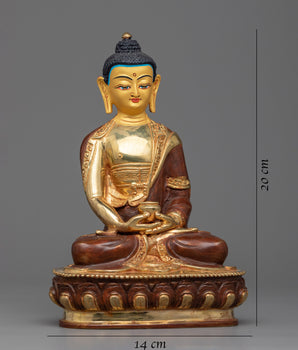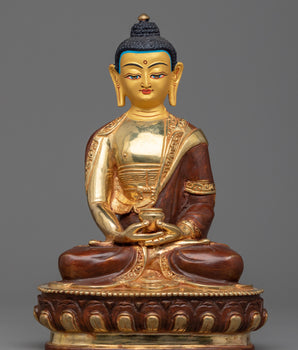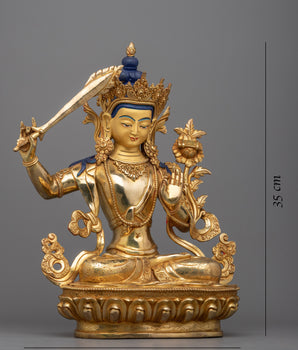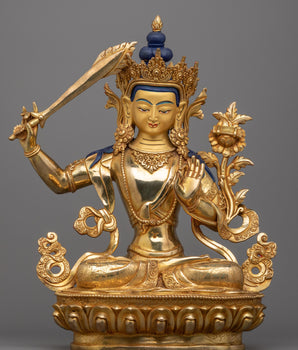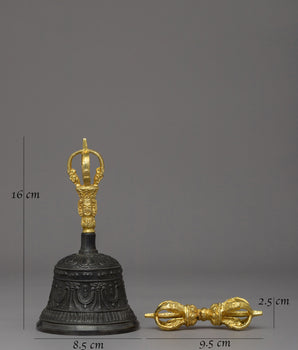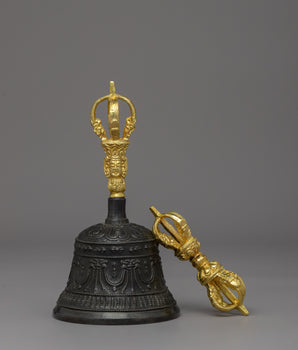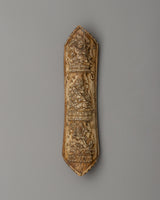
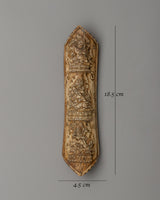
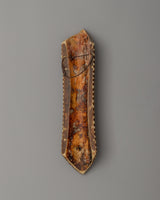
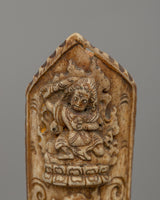
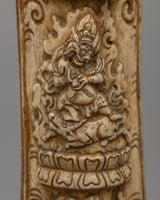
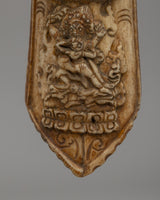
Yamantaka and Mahakala Wall Decor | Symbol of Protection & Overcoming Obstacles

100% AUTHENTIC

HANDMADE

FREE SHIPPING
Yamantaka and Mahakala Wall Decor for Spiritual Empowerment
-------------------------------------------------------------
Size: 18.5cm (Height) 4.5cm (Width)
Weight: 0.12 kg
Materials: Ethically sourced Buffalo Bone
-------------------------------------------------------------
About Our Yamantaka :
Our Yamantaka and Mahakala wall décor, measuring 18.5cm tall and 4.5cm broad, is skillfully carved from ethically obtained buffalo bone, a material with great spiritual meaning in Buddhist teachings. The buffalo bone denotes strength, durability, and anchoring energy, all of which contribute to this revered figure's protective power. This piece's tiny dimensions make it an excellent addition to any altar or meditation place, where it can serve as a potent symbol of protection, spiritual change, and conquering barriers. This Yamantaka wall art adds both beauty and spiritual value to any sacred space.
Yamantaka, a representation of purity and the emergence of insight is positioned in the heart of Buddhist artwork, sitting atop a lotus pedestal. The strength and might required to conquer spiritual difficulties are provided by Mahakala, the deity of spiritual protection, at the top. Mahakala and consort at the bottom symbolize the fusion of compassion and wisdom, assisting practitioners in their spiritual cleansing. The ferocious guardian Yamantaka can eradicate ignorance and turn evil energy into spiritual power. This Yamantaka wall décor offers a powerful spiritual connection and protection for the practitioner while serving as a profound reminder of the transformational potential of wisdom, protection, and purification.
Introduction to Yamantaka :
Yamantaka statue is shown in various ways, one of which is Yamataka Ekavira, which means "lone hero." He has a bull's or buffalo's head with long horns as the center head, among many other features. There are eight primary heads, with the Bodhisattva Manjushri's little crowned head at the pinnacle. Yamantaka dressed in an elephant-skin robe, a garland of freshly cut human skulls, snakes, interwoven bone ornament bracelets, necklaces, and a girdle. Except for his adornments, he is naked. A flaming halo is behind him, and his erect phallus has a crimson tip. He wields a chopping knife (Kartika) in his primary hands, symbolizing his power to sever the root of illusion.
Why choose Evamratna?
To give your space a peaceful, powerful, and attractive feel, we are introducing Buddhism-inspired home décor items to enliven your space with zen vibes in the form of decoration, an art form, or inspiration.











